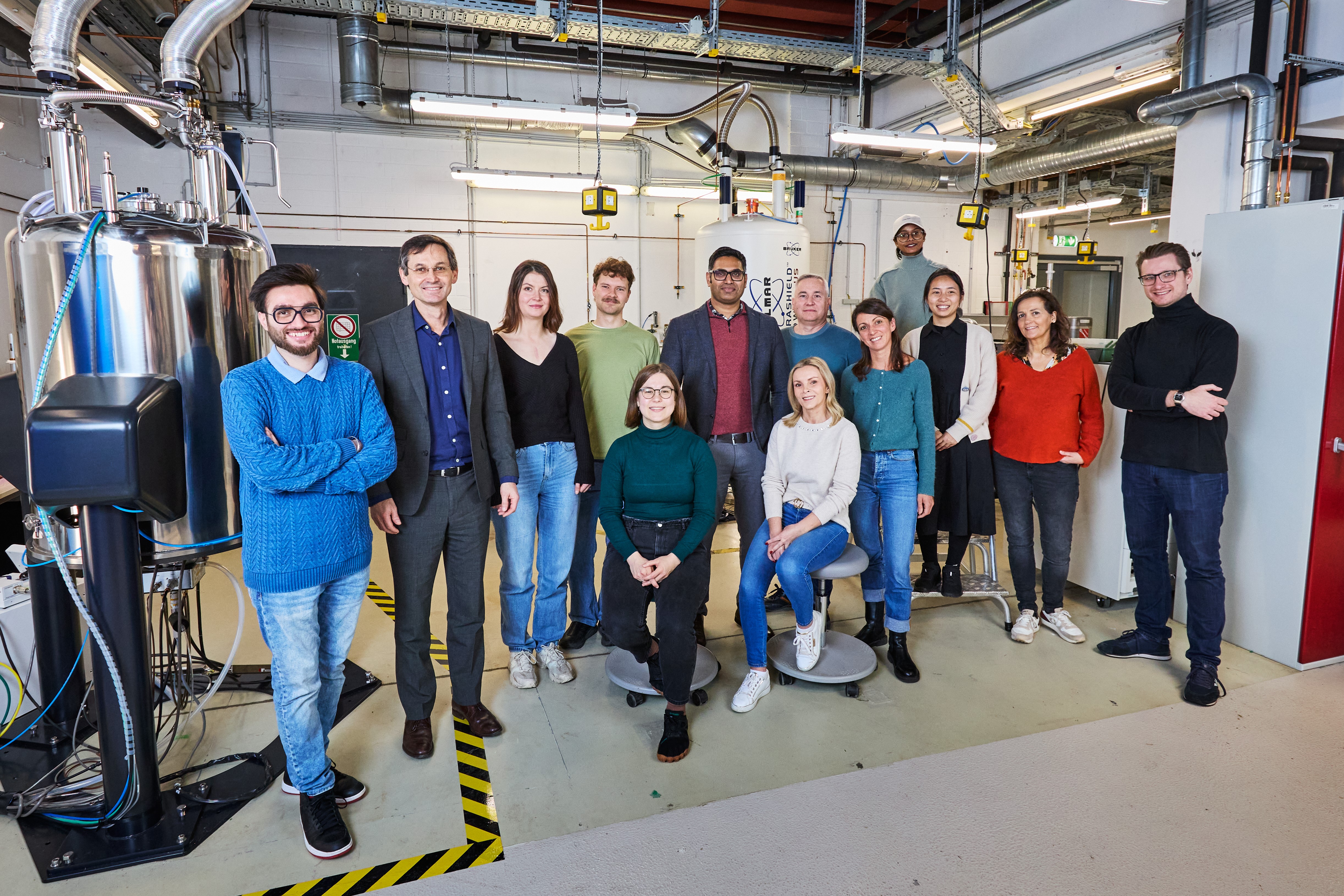Microsystems (MSE)
Marcel Utz [Contact]
Welcome...
...to the Utz lab! We use microtechnology to better understand complex systems, from advanced materials such as photovoltaics and organic semiconductors all the way to biological systems such as cells and tissues. Microtechnology provides the tools to create controlled environments in which we can study specific aspects of their behaviour, but also allows us to develop novel tools and sensors for investigation. A major part of our activities focuses on integrating magnetic resonance techniques with microfluidic lab-on-a-chip systems. This involves the development of specialized magnetic resonance sensors, pulse sequences, and data extraction strategies.
Our research contributes to the research program 3: "Materials Systems Engineering" (MSE), Topic 5: "Materials Information Discovery" (link to MSE website), as well as to the research program 2: "Natural, Artificial and Cognitive Information Processing" (NACIP), Topic 4: Molecular and cellular Information Processing (link to NACIP website), in the research field „Information“ as defined by the Helmholtz Association.

|
Biological Model Systems (BMS) - Dr. Annamarija RaicProgress in the life sciences and in medicine increasingly relies on model systems such as cell cultures rather than animal testing. By using advanced micro-environment engineering techniques for organoids and organs-on-a-chip it is now possible to derive models that closely replicate human biological disease processes, and that can therefore be used to develop novel diagnostic tools, better understanding of disease processes, and novel approaches to therapy. Our goal is to contribute to these developments at the forefront of science, while supporting the integration of biological model systems with advanced analytical tools, including micro-magnetic resonance.
|
|
Lab on a Chip (LoC) - Dr. Ahrens / Dr. LängeMicrostructured devices can provide an environment for biological and other experiments, such as integrating cell culture and analytics in a compact and cost-effective platform. Device development typically includes physical, chemical, and biochemical functionalisation of the surfaces involved with respect to the specific application. Our work focuses on novel methods of fabrication, in particular on bonding technologies with special emphasis on lab-on-a-chip systems that can be integrated with magnetic resonance and other advanced analytical techniques.
|
|
Magnetic Resonance Automation (MRA) - Prof. Dr. Marcel UtzMagnetic resonance can provide rich data on live systems, reporting in a comprehensive way on chemical processes, metabolism, and transport phenomena. Our aim is to make use of these capabilities in automated laboratory systems, where the data obtained can be directly fed back into the experimental loop. In time, we hope this will give rise to “self-driving labs”, which can solve scientific and technological problems with only minimal manual input. To this effect, we are developing fully automated systems for sample handling, spectrometer tuning and setup, as well as for data acquisition and interpretation. We incorporate recent advancements in the fields of robotics, machine learning, and of course magnetic resonance spectroscopy to this effect.
|
|
Spin Dynamics (SDY) - Prof. Dr. Marcel UtzMagnetic resonance spectroscopy and imaging work by encoding the structure and dynamics of matter into the quantum state of the nuclear spin system. This information can then be read out by radiofrequency signals. Both the encoding and the readout processes can be controlled through electronically controlled magnetic fields. Our aim is to develop optimal protocols for this that maximize the amount and quality of the information that can be extracted in this way. An important aspect is the enhancement of nuclear magnetic resonance signals by hyperpolarization techniques. Under special circumstances, it is possible to align the nuclear spins to a much larger degree than would be warranted by thermal equilibrium with even a large magnetic field. We are using microtechnology to develop and optimize such hyperpolarization techniques, with the goal to increase the sensitivity and readout efficiency of magnetic resonance methods.
|
|
Surfaces and High-Density Molecular Arrays (SHA) - Prof. Dr. Alexander Nesterov-MüllerInnovative printing technology allows patterning of surfaces with high-density arrays of peptides and other biomolecules. We are developing novel ways and applications of such structured surfaces for biomedical analytics and as growth substrates for biological model systems.
|

